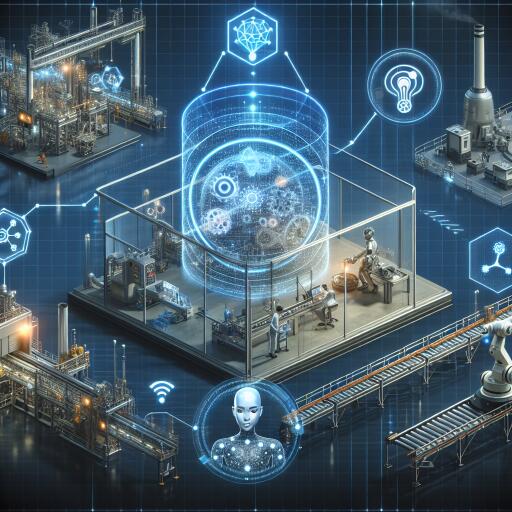Revolutionizing the Manufacturing Landscape with Sensing Technology
The advent of sensing technology has been a game-changer in the manufacturing industry, paving the way for what is now known as smart manufacturing. This transformative approach merges the physical and digital realms, drastically improving efficiency and fostering innovation through seamless integration. At the heart of this revolution are three key components: digital twin technologies, artificial intelligence (AI), and human-robot collaboration. Each plays a pivotal role in revolutionizing industrial operations, offering benefits such as real-time monitoring, data-driven decision making, and predictive maintenance, all of which lead to unprecedented levels of productivity and safety.
Digital Twins: The Blueprint for Future Manufacturing
Digital twins have emerged as a cornerstone of smart manufacturing, providing a virtual model of a product, process, or service. This technology enables businesses to simulate, analyze, and test scenarios in a virtual space before they are deployed in the real world, significantly reducing costs and time-to-market. The precision and efficiency of digital twins not only enhance productivity but also open up new avenues for innovation and customization in manufacturing processes.
Artificial Intelligence: The Brain Behind the Operation
AI is another powerful force driving smart manufacturing forward. By harnessing AI, manufacturers can predict trends, automate processes, and make more informed decisions, leading to a more proactive approach to process optimization. AI’s ability to learn and improve over time means that manufacturing processes can continually evolve to become more efficient and less prone to error, ensuring that quality remains high while costs are kept to a minimum.
Human-Robot Collaboration: Working Hand in Hand
The integration of robotic systems into the manufacturing process does not mean the replacement of human workers but rather their enhancement. Advanced human-robot collaboration strategies have redefined the boundaries of what’s possible in manufacturing. Robots take on repetitive, physically demanding, or hazardous tasks, allowing human workers to focus on more complex, creative, or supervisory roles. This symbiosis ensures higher safety standards and boosts productivity by leveraging the unique strengths of both humans and robots.
Call for Contributions: Navigating the Future of Smart Manufacturing
This Special Issue titled “Smart Manufacturing based on Sensing Technology: Digital Twin, Artificial Intelligence, and Human-Robot Collaboration” seeks to explore the latest advancements, methodologies, and real-world applications that utilize these transformative technologies. We invite researchers, academicians, and industry experts to contribute to this important discourse.
Submissions can range from original research and review articles to case studies on various topics within the scope of this issue. For those interested in contributing, manuscripts should be submitted online through the official submission portal. It’s important to ensure that all manuscripts are original, have not been published previously, and are not under consideration elsewhere. They will undergo a rigorous single-blind peer-review process to ensure high standards of quality and relevance are met.
Accepted submissions will benefit from continuous online publication, gaining visibility among the international community on the dedicated Special Issue webpage. Both research articles and review articles, as well as short communications, are encouraged. Prospective authors can also send a title and short abstract in advance to receive feedback and make necessary adjustments before their final submission.
For detailed submission guidelines and further information on the publication process, including Article Processing Charges, please refer to the Instructions for Authors on the journal’s website. Additionally, authors whose first language is not English may take advantage of the journal’s English editing service to ensure their manuscripts meet the publication’s high linguistic standards.
The future of manufacturing is smart, and it’s here. Through the integration of sensing technologies like digital twins, artificial intelligence, and human-robot collaboration, the industry is poised for unprecedented efficiency, safety, and innovation. We look forward to your contributions to this exciting field, as we collectively navigate the promising horizon of smart manufacturing.










